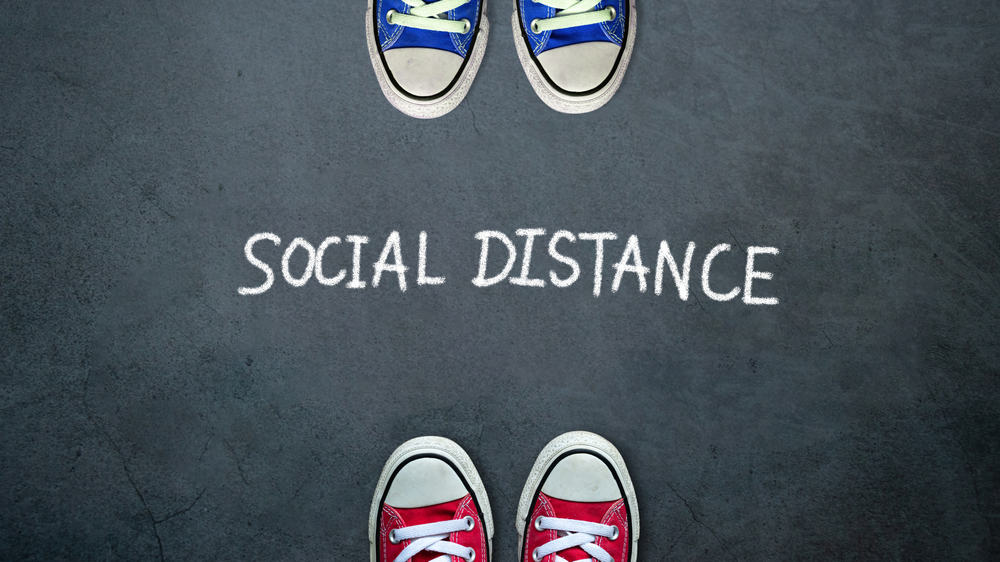As the world navigates the coronavirus (COVID-19) pandemic, creative solutions have been key to keeping businesses, corporations, and public institutions afloat, especially in the event planning space, which has resulted in a chunk of the industry professionals looking to find a job during COVID-19.
Between state-enforced lockdowns and social distancing, large events that rely on crowds have been hit hard. With event safety always a top priority, live streaming has become a crucial alternative—concerts, business conferences, exercise classes, and academic lectures can all be attended from home now.
But what happens once stay-at-home orders are lifted?
Loosening Restrictions: An Eventuality
States are flirting with the idea of loosening their lockdown orders, much to the chagrin of doctors and scholars who expect one more wave of the virus. However, Society at large, and individuals, are going to be the ones who have to feel comfortable reentering crowded spaces. And companies are going to be hesitant to encourage others to do so.
That’s why social distancing will still need to exist at events during reintegration periods. Here’s how to prioritize event safety in the future.
Throwing an Event with Minimal Risks
When the transition back to in-person events comes, you’ll need to be prepared to make sure you start off on the right foot. Events are all about coming together as a community, and protecting people’s health and safety reflects your commitment to that mission.
Knowing the five ways to establish event safety measures will help your comeback be successful.
1. Room Setups
Responsible room setup is going to be a huge part of making people feel comfortable attending your events. Here are some suggestions community members from the Professional Convention Management Association (PCMA), like Kelsey Schmit and Jennifer Stewart, have brainstormed:
- Tabletop events – Establish social distancing regulations of at least six feet in every aspect of the room setup—placing tables six feet apart, creating 12-foot aisles, marking the ground with tape to designate the space people should be leaving between one another while waiting in lines.
- Seated events – Think of seating in sets of two rather than traditional theatre-style rows—placing two seats next to each other, with six-foot aisles and a safe distance between each pair of chairs. We suggest maintaining a six-foot distance between each pair of chairs in every direction.
Standing events like concerts pose a different set of issues, making it much harder to practice event safety and follow safe social distancing guidelines. It’ll likely be a longer time before crowded concerts and festivals can return to business as usual, but in the meantime, try the seated event approach. You can sell arena seats in twos, leaving every few seats empty, and place chairs in the general admission or floor section using the guidelines above.
2. Limiting the Number of Event-Goers
At this point, you’ve probably realized that using room setup tactics for event safety means your venue will be operating below capacity. Try to make peace with that by telling yourself it’s only temporary.
Think of it this way—it’s much better to have smaller events than no events at all.
Regulating event size is a two-part process: limiting the number of people per event, and being mindful of the virus’s lifespan when it comes to event dates and the takedown process.
Local Laws and CDC Guidelines
Currently, federal, state, and local governments have banned gatherings of more than 10 people. This is going to change on a state-by-state basis, sometimes with discrepancies between cities, so check ahead of time to make sure you’re following local laws.
Keep in mind that the original guidelines from the Center of Disease Control (CDC), as the virus was first appearing, was to limit events to 250 people. If you’ve booked a massive venue that can hold more than that, even after implementing a safe social distancing setup, and the city says large crowds are okay, still choosing to put a 250-person cap on events is a smart idea.
COVID-19 Lifespan
Since the virus can remain on surfaces for a long time, it’s best to schedule events with some time in between rather than consecutive days. Even though the virus only lasts in the air for three hours, it stays active for up to five days on metal, four days on wood, and three days on plastic, according to WedMD.
Event planning can look to hospitality for safe approaches to setup and takedown. A great example is The Four Seasons Hotel in New York—here are some of their relevant procedures , as described to NBC News:
- Virtual check-ins upon arrival
- After virtual check-out, the room is left vacant for 24 hours
- After 24 hours, a deep cleaning crew wearing hazmat suits comes in
- The room is left vacant for another 24 hours
- After two days, housekeeping comes in wearing personal protective equipment (PPE)
This process ensures that rooms are left completely clear of guests for around three days, decreasing the chances of the next guests being exposed to anything. As the virus slows its spreading, hazmat suits might be a little aggressive for the takedown of your events. But wearing PPE like masks, gloves, and shoe covers, and not rushing the clean-up process, will still be necessities for the safety of event staff.
3. Establish Community Partners
As you prepare for your event, create relationships within the community—the local public health department, law enforcement, hospitals, and any other partners who are related to your event industry (vendors, suppliers, or transportation companies). True event safety means being prepared for anything, so consider the demographic of your attendees and create an emergency response plan to serve them.
A lesser known aspect of the CDC’s guidelines in the pandemic’s early stages was designating an isolation space for staff or participants who started feeling sick during an event. This is a great idea to use during the early stages of reintegration. Here are the CDC’s suggestions for implementing this with the help of community partners:
- Make a safety plan for removing sick staff or participants from the event and into the isolated space as soon as possible
- Establish procedures for them to leave the event immediately if they live nearby, and have an alternative option for people who don’t
- Provide disposable face masks and gloves for whoever is monitoring the space, and have extras ready to distribute to those who become sick
4. Provide Supplies for Prevention
Having masks and gloves on-site in the designated isolation space, and providing PPE for the takedown crew are both important ways to practice event safety. Most likely, events will be given the green light to take place in-person before herd immunity is declared (meaning the majority of the population is immune to COVID-19). Additionally, a vaccine could be two years away and there is no evidence that people who have recovered from COVID-19 are protected from reinfection, according to the World Health Organization (WHO).
For these reasons, preventive measures must be a part of your events for attendees. Make sure to include the following items:
- Sanitation stations – Touch-free stations should be placed throughout the venue, with hand sanitizer containing at least 60% alcohol.
- Tissues – Have tissues available to prevent people from feeling the need to touch their nose and mouth.
- Trash bins – Place bins near tissues and throughout the venue so people don’t leave potentially contaminated items around.
Ideally, you should choose a venue with touch-free sinks, soap, and paper towel dispensers. If that’s not possible, at least make sure all the bathrooms are well-stocked for hand-washing beforehand.
5. Make Your Safety Expectations Clear
Communicate with people who are attending, through email or other promotional materials, to reiterate the seriousness of event safety. Tell them what you’re doing to make it a safe environment on your end, and ask them to do their part too. Here are some suggestions of how to address that:
- Discouraging handshakes, high fives, and other greeting that use physical contact
- Encouraging masks for anyone who has been coughing, sneezing, or has a runny nose
- Making it clear that security will be kindly enforcing social distancing standards
If Event Safety Isn’t Possible, Stay Virtual
Depending on your business and industry, incorporating social distancing into your events may take time to establish. If safety precautions can’t be met, don’t rush into it—virtual events are still an incredibly popular alternative.
While you’re probably itching to return to in-person events, virtual experiences offer a less stressful solution for planners, reduce the environmental impact of drawing a large crowd, and can even lower costs. This pandemic has opened new doors to virtual experiences that will stay relevant long after life returns to normal, simply because we live in a digital world.
Get Expert Guidance
Putting on large events in uncertain times like these, even after the virus is fading out, requires close attention to detail. Events, no matter how big or small, need to be carefully curated to avoid any health and safety risks and make people feel comfortable after being in isolation for so long.
Whether you’re building a virtual event checklist now or planning an in-person event in the future, getting expert guidance will help you understand how to work social distancing into your events. Vario also offers a hybrid events solution that will help you find a balance between in-person and online events.
Maybe you’re not sure how to move forward with an idea, or you’re looking for direction to pull off a successful event you’ve been visualizing—no matter what, Vario is here to help. Reaching out to the team at Vario will give you the individualized guidance and support you need to plan your next event, and to do so safely.
For more tips on event planner marketing strategies, visit our website today.







